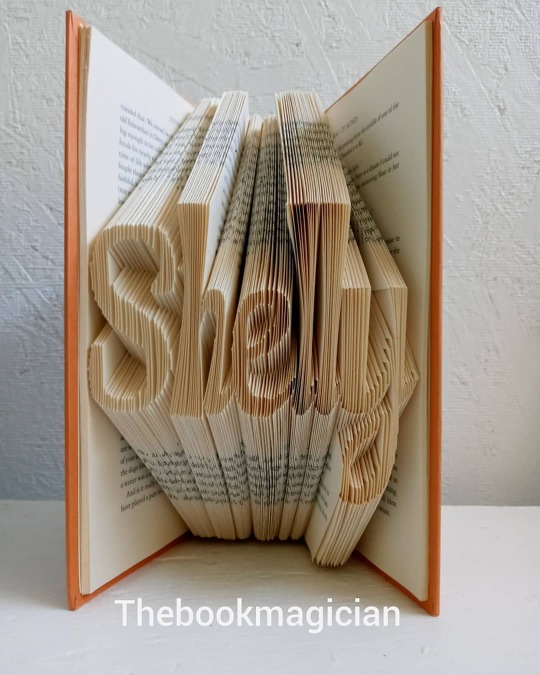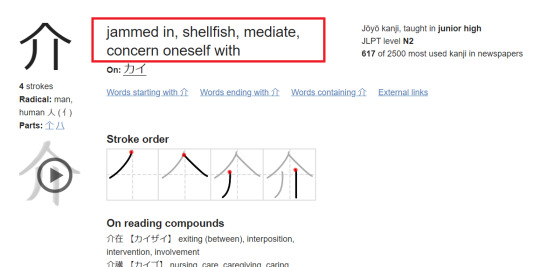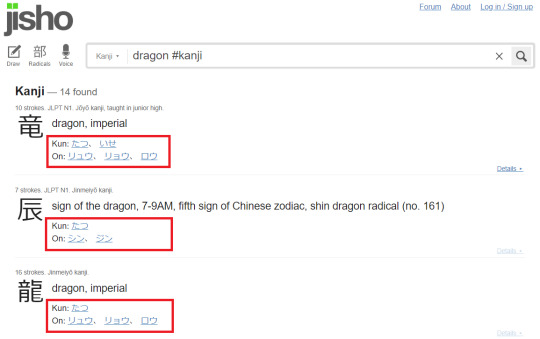#yourwordhere
Note
this might not make sense, but how do you make the text multi colored?:3
nw ,, !!
my steps are
1. always put the words in FIRST
(separate lines are recommended)
2. edit this code and put it into HTML
(in the settings of the post ,, then text editor)
<span style="color: #hexhere">yourwordhere</span>
and your done ,, !!
i find editing around the word
is easiest :))
37 notes
·
View notes
Photo

#customgifts #personalizedgifts #yournamehere #yourwordhere #names #words #bookart #booklovers #bookworms etsy.com/shop/Thebookmagician https://www.instagram.com/p/CEuG2NvMW25/?igshid=1mbisdf312i2y
0 notes
Text
Using Jisho to Translate Verbs, Adjectives, and Nouns for Names
So, there was definitely a lot going on in my “Creating a Name” guide, and after a couple of asks and private messages on creating names I realized that this part deserves its own more digestible post.
In one of the asks I got, I mentioned that this section of the names guide might have gotten lost in all the background context hubbub (it’s found in the first subsection in the “Types of Names” section; the following quote is edited for brevity):
A common thing I see in people naming OCs after verbs to give them that “name that matches the quirk” quality is that they [...] just use that verb as a name, with the verb ending and all [...]. Most verbs have a hiragana character at the end which changes depending on how the word is conjugated, but for a name it’s easy to just cut that part off and just use the singular kanji. When doing that, make sure to find an alternate reading or a name reading for the kanji by itself [...].
For people who don’t know how to read Japanese, this might be confusing or hard to do. So, the following is a step by step guide on how to use Jisho.org to properly translate an English word into a name worthy of an MHA character. (Unfortunately, this post does not account for punny names, just how to use jisho to make names. See the names guide for more on punny names, though.)
Disclaimer: This is just a guide for how to use jisho in the context of creating a name as referenced on this blog/in the names guide. This is not the recommended use of jisho, nor how you would normally create names for characters in other media/fandoms... though you can if you want to.
Note: I will not be defining words like kana or hiragana in this post. Please see the names guide or google for more info!
1. Translate your word. (And also, understand how Jisho works.)
If you have a lot of ideas, translate many words. Anything related to the character’s quirk or personality, whatever works.
Using the example from the names guide, here’s what jisho looks like when you look up “dragon”:

The anatomy of the above image is as follows:
Orange: the English word you’re looking up
Blue: the Japanese word relating to the English word you’re looking up (the image only shows one entry, but there will be multiple on the actual jisho site), with “furigana” above the kanji to show you how to read/say it
Keep in mind that this word may not actually mean what you think it means, hence the next bullet point of “green”...
Green: the definition of the Japanese word (blue), which usually has the English word you looked up (orange) somewhere in there, to give you a precise idea of what the word actually means, and may even give you multiple definitions if the word has more than one meaning
Note the small grey word at the top that says “Noun”! This tells you what kind of word the entry (blue) is, and this is going to be especially important when I get to talking about verbs and adjectives...
Red: the kanji which include the word you looked up (orange) in its translation, but keep in mind that kanji themselves have multiple definitions and may not just mean the one thing you were looking for
This section might actually be the most useful to you in making names, since you won’t get caught up in all the multiple definitions of actual words, but sometimes actual words are useful, so using just the kanji list to create a name is another starting point to go from rather than using the definitions/actual words as a starting point
Check the “More Kanji >” link toward the bottom of this list if you’d rather use a kanji as a starting point for your name rather than a word (for future reference, you can also skip directly to this list by looking up your word with the “#kanji” filter: “YourWordHere #kanji”)
Check the “Details >” link in the lower right corner of the box to see more info about the kanji, its readings (kunyomi, onyomi, and nanori/name readings), and some other words that may include this kanji somewhere in its beginning, middle, or end
Now, after you translate your word, there’s a couple ways this can go:
You probably started with a noun so you have your kanji to create a name with. Skip to STEP 3!
You decided to use the kanji list at the sidebar rather than using a word. Skip to STEP 3!
Your word was an adjective or verb, so there might be more work to do. Proceed to STEP 2!
2. Cut off the kana, extract the kanji.
So, say the word you looked up wasn’t as simple as a noun. There’s probably extra kana tacked on, which isn’t really the norm in a name. So you need to cut those off.
For quick reference like in my proverb names post, these are kana!

For an adjective that’s also a noun like “白 shiro” (white), there’s no extra kana, so you’re good. But some adjectives like “楽しい tanoshii” (fun/enjoyable) and “可愛い kawaii” (cute) have kana at the end, and the same goes for verbs like “寝る neru” (to sleep), “泳ぐ oyogu” (to swim), and “死ぬ shinu” (to die). The occasional noun will have a kana too, like “眠り nemuri” (sleep), but the same rules apply--cut off the kana!
Extra information, feel free to skip this section:
Japanese usually have two types of adjectives, “i-adjectives” and “na-adjectives”, which you’ll see in the definitions section (green from before) in jisho. The “i-adjectives” are the ones that usually have extra kana.
There’s a sort of third type of adjective, “no-adjectives”, which are basically nouns that can be adjectives too. You don’t have to worry about any extra kana showing up with these, for the most part.
There are three types of verbs, “ru-verbs”, “u-verbs”, and “irregular verbs”, but jisho calls them different things like “Godan verbs”. There are other classifications like “Transitive” or “Intransitive” and other such things listed in jisho, but you don’t have to worry about them (they’re mostly for understanding usage/grammar, which isn’t what we’re focusing on here). In regards to the “ru” and “u” verbs, verbs are categorized by how they’re conjugated. In Japanese, the ending kana changes for tense, negative, potential, etc. which is why the kana is at the end of the kanji rather than part of the kanji itself.
Now once you have just the kanji, we can proceed with creating a name as outlined in the names guide. I’m gonna illustrate what the steps look like so you have a better idea what to do!
3. For a simple name, look up the kanji with the “#names” filter.
After you’ve got your kanji, copy it into the search bar and either type “#names” after it or manually click the filter button (green in the below image) and select the “Names” option (blue in the below image).

That will give you a whole list of names, with romaji included so you know how to read the kanji. It will also tell you whether it’s a male or female given name, a family name/surname, an unspecified name (usually for unisex given names, but sometimes those kinds of names also work as surnames), or the name of a place or known public figure (the latter-most two options you should ignore--naming a character after a place is unconventional, and you really probably shouldn’t be naming characters after real life people).
To narrow down your search so you don’t have to look through all the categories you don’t need, you can use these advanced search options by typing in these tags after adding the “#names” filter:
“#surname” for surnames
“#given” for given names, unisex or first names of any gender
“#fem” for feminine/female names
“#masc” for masculine/male names
“#unclass” for unclassified names (these can be any of the above)
So if you’re looking for names for a boy with a dragon quirk, for example, you could search “竜 #names #masc” or “竜 #names #given” or “竜 #names #unclass”.
EXTRA OPTION: Homophonous Names
In the “How to Create a Name for your OC” section of the names guide, one of the tips about creating a “name that sounds like another word” name is to take the pronunciation of the name that includes the kanji you want and using a name spelled with different kanji instead. It’s really easy to use the “#names” filter on jisho to do this!
Once you find a name you like, simply take the romaji spelling (green below), put it into the search bar (red below), and add the “#names” filter. This will show you a whole list of names that sound the same but are spelled differently (blue below)! You can pick the spelling you like, but be sure to check what it actually means with STEP 4!


Anyway, this step is pretty simple, but for a name that’s more than one kanji long, proceed to STEP 4. Otherwise, see more options in STEP 5.
4. Translate the name back to see the meanings of the other kanji in the name.
So say you found a name with more than one kanji that you like, including the one you were looking up in the first place. Great, now to see what the full name actually means!
Copy the kanji in the brackets of that name (green below--note that you shouldn’t be copying the kana directly to the left of it!) and put it back into the search bar (replace the text in the red below).

After that, either type “#kanji” directly after the name or manually click the filter button (green below) and select the “Kanji” option (blue below).

You’ll be taken to a page with lots of large text and technical info on it, but the most important bit is the definition of the kanji (green below). The image only shows the first kanji of the name, but if you scroll down you’ll see the others (one example in red below).


If that’s what you want your name to mean, great, you have a name! Otherwise, you can go back to the other steps and start over, until you find a name you like.
Proceed to STEP 5 if you want to manipulate the name some more to give it some uniqueness or possibly make a pun out of it.
5. Make a name out of a combination of kanji of your choice, or find alternate kanji readings.
So you have a kanji you like, but the options in the list of names in the “#names” filter don’t really fit your character: ie. you have a dragon quirk user but you don’t want to name them just “竜一 Ryuuichi” (one/first dragon) or “竜鼻 Tatsuhana” (dragon snout) or something.
One of the things you can do is just put together 2-3 kanji that don’t actually make a “real name” and come up with your own reading for them. For instance, “竜夜 Tatsuya” (dragon night) may be homophonous with a “real name”, but the spelling is unusual and if you look it up on jisho with the “#names” filter, nothing will come up.
It’s possible to make up names like the above example by combining the the different readings of the kanji. For example the 夜 can be read “yo”, “yoru”, or “ya”. To find the readings of a kanji, you can either look in the kanji list when you’re looking up a word, or you can check out the specific kanji details to find the kunyomi, onyomi, and nanori. (All the different areas to find kanji readings are in red in the images below. Nanori is called the “Japanese names” reading in the last image, but be aware that not every kanji will have nanori available.)



(The names guide outlines this a little too, as well as list other ways to find kunyomi, onyomi, nanori, etc. and their romaji readings, but I will not be getting into that here since I’m only focusing on jisho in this post.)
Of course you have to know how to read a little kana to figure out how to pronounce the kanji and its readings, but you can either reference the kana sheet above, google or wiki, or use google translate. The image below is going to be the only non-jisho image here I promise, but this part is important for people who don’t know how to read kana so I’m including it. (Be careful not to use the actual translation, in red below. The green and blue are the kunyomi and onyomi respectively, just to show you where in the romaji reading they are, as google translate doesn’t use line breaks in it. You can see why it’s not a good idea to use the red area since it tried to translate “rou” as an actual English word “low”--this also illustrates the importance of kanji, since all of those readings technically mean “dragon”!)

Once you have your kanji readings, you can combine them however you think sounds best. For example, 竜夜 (dragon night) can be any of these given or family names (this is not a complete list, and not all of them are necessarily homophonous with real names):
Tatsuyo
Iseya
Iseyoru
Ryuuya
Ryuuyo
Ryouya
Rouya
Rouyoru
Riuya
Riuyo
Riuyoru
You can also do this to names that aren’t made-up mashed-together kanji. For instance, take the real name “竜ケ江 Tatsugae”. With alternate readings, you can use “Isekemi” as a surname and still spell it the same as the traditional “Tatsugae”. This is useful to make a name look normal but change the pronunciation to be appropriate for a pun (my example is not a pun, however--I was just demonstrating how to do it). An example of this is Mina Ashido’s name, as the surname “芦戸” is normally pronounced “Ashito”.
Alternate readings are usually how puns are made, but I won’t get into that here. Check the names guide for more in-depth stuff on that, but the info from STEP 5 is particularly useful for the “name that matches the quirk” subsection of the “How to Create a Name for your OC” section.
Congrats, you made it to the end!
Welp, that’s all you need to know about using jisho to make a name! Please check out the “Creating a Name for your MHA Character” guide that this post was made to supplement. This post was just “how to use jisho”, the names guide will really get into the meat of how to create a name befitting of an MHA character.
If anything about this post was unclear or confusing, let me know and I’ll try to clarify. Hope this helps you name your character!
Go beyond and PLUS ULTRA!
#my hero academia#boku no hero academia#bnha#mha#boku no hero academia oc#bnha oc#my hero academia oc#mha oc#boku no hero academia ocs#bnha ocs#my hero academia ocs#mha ocs#archivist#tips#names#getting started
65 notes
·
View notes
Photo

#customgifts #yourwordhere #yournamehere #uniquegifts #birthdayforher #birthday #birthdayforhim #bookfolding #booklovers etsy.com/shop/thebookmagician https://www.instagram.com/p/CBgdxwtHs8Z/?igshid=ug0sqhhv56tw
#customgifts#yourwordhere#yournamehere#uniquegifts#birthdayforher#birthday#birthdayforhim#bookfolding#booklovers
0 notes
Photo

#gifts #names #words #yourwordhere #yournamehere etsy.com/shop/thebookmagician https://www.instagram.com/p/CBLpdfonqP8/?igshid=azf1kkgsoi8u
0 notes
Photo

#giftformom #customgifts #names #yourwordhere #bookfolding #booklovers etsy.com/shop/thebookmagician https://www.instagram.com/p/B_nNUJcn8Ck/?igshid=1q5rpjutx1lk9
0 notes
Photo

#yournamehere #yourwordhere #customgifts #customdecor #barmitzvahcenterpieces #personalizedgift etsy.com/shop/thebookmagician https://www.instagram.com/p/B9fWx50nhYr/?igshid=1f39pma8ieste
0 notes
Photo

#yourwordhere #yournamehere #personalizedgifts personalized decor etsy.com/shop/thebookmagician https://www.instagram.com/p/B73x0E0nCX9/?igshid=qlh0g8k1idpm
0 notes
Photo

Snowflake #customgifts #customdecor #bookfolding #booklovers etsy.com/shop/thebookmagician #names #yourwordhere https://www.instagram.com/p/B73xSVMnmYo/?igshid=ech3b8r4z8kh
0 notes
Photo

#yournamehere #yourwordhere #customgifts #customdecor #barmitzvahcenterpieces #personalizedgift etsy.com/shop/thebookmagician — view on Instagram https://ift.tt/2wDQD31
1 note
·
View note
Photo

#yourwordhere #yournamehere #personalizedgifts personalized decor etsy.com/shop/thebookmagician — view on Instagram https://ift.tt/2tXzjoK
0 notes
Photo

Snowflake #customgifts #customdecor #bookfolding #booklovers etsy.com/shop/thebookmagician #names #yourwordhere — view on Instagram https://ift.tt/2GwFdzK
0 notes